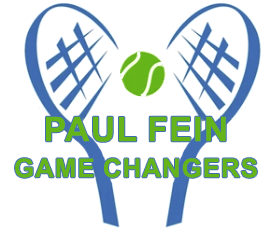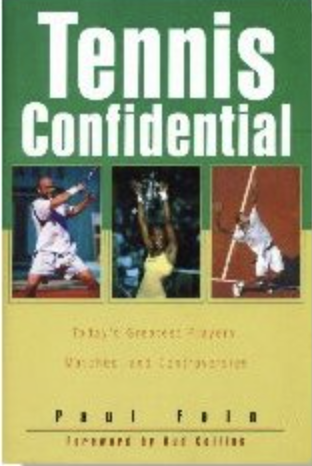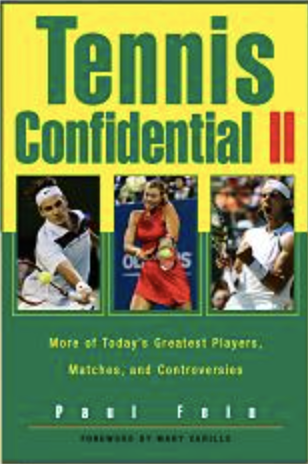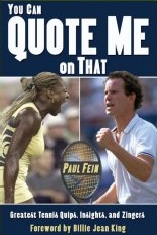The Perfect Game vs. The Perfect Player
Hits: 105
Over the decades, tennis writers and broadcasters have presented the strokes, skills, and traits the “perfect player” would possess.
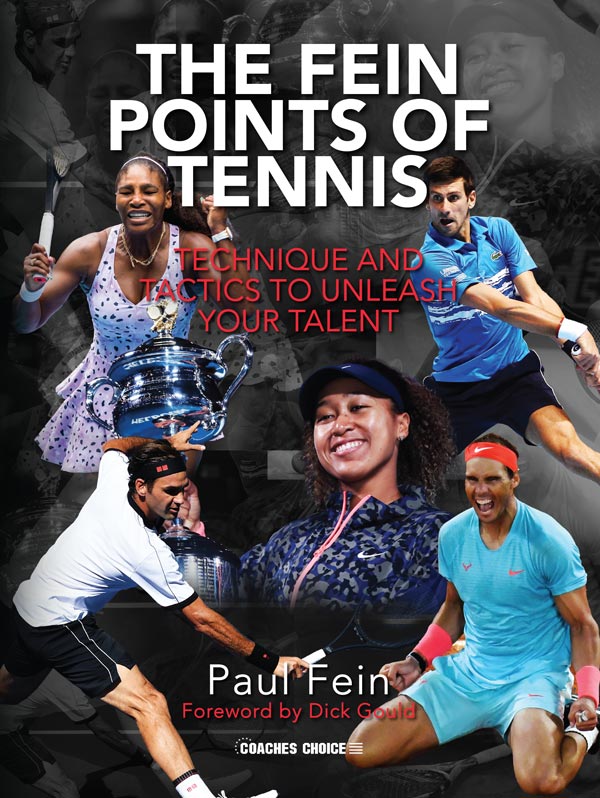
Over the decades, tennis writers and broadcasters have presented the strokes, skills, and traits the “perfect player” would possess. For the men, many pundits chose Novak Djokovic’s backhand and serve return, Rafael Nadal’s forehand and hyper-competitiveness, Roger Federer’s breathtaking athleticism, Stefan Edberg’s sound and aggressive volleys, Bjorn Borg’s foot speed and stamina, and Pete Sampras’s serves and smashes. Of course, Andre Agassi, Ivan Lendl, Jimmy Connors, John McEnroe, and John Isner, received plenty of support, as did pre-Open champions Don Budge, and Pancho Gonzalez, and Rod Laver, who bridged both eras.
In my 2021 instruction book, The Fein Points of Tennis: Technique and Tactics to Unleash Your Talent, I included an essay titled “Does Djokovic Have the Perfect Game?” It focused on his impeccable technique—strokes, footwork, and grips. Of course, Novak's serve isn’t as devastating as Isner’s, his net game is not in Edberg’s class, and his overhead efficiency is inferior to that of Sampras (and many past champions). A revealing stat is that Djokovic puts away only 41% of his smashes compared to 59% for other top-100 players.
So, while Djokovic has virtually perfect technique, he certainly isn’t the mythical “perfect player.”
No player—man or woman—has ever deserved that accolade.
But no player, in my view, has ever come as close as Carlos Alcaraz. The 21-year-old Spaniard said he modeled his game after the extremely athletic and versatile Federer. He also learned the game, like compatriot Nadal, on clay. “I still get nervous when I speak with Rafa—he is my idol and a model to follow.” Some observers, but not Daniil Medvedev, believe Alcaraz contains elements of all the Big Three.
The 28-year-old Russian said, “I played the Big Three when they were over 30, so it’s a bit different…. So Roger plays on the [base] line. He has beautiful technique and shots and goes to the net. Novak plays also on the line, but is completely different. He has amazing defense. He’s like a pinball player where the ball comes back faster to you. Rafa is completely different. He can stay ten meters behind the baseline, but he is going to run to every ball and hit a banana [topspin] shot—lefty.
“Carlos, I don’t think he has anything from them. It’s a different game style. Carlos is different from many players. We all have our preferences—someone prefers defense, someone prefers counterattack, someone prefers to be super aggressive. [But] he can do all of it.
“He can sometimes slice, even a bad slice, and then run and try to win. When you hit easy shots sometimes…they don’t want to attack, but that’s not Carlos. If you hit him an easy shot, you know it’s over for you. That what makes it tough.
“Probably in my career, he’s the toughest opponent I have faced.”
The fact that Alcaraz became the youngest man in history, at 21, to capture a Grand Slam title on every surface confirms his versatility at the highest level. All-time great Martina Navratilova, now a Tennis Channel analyst said he has the best combination of power and touch she’s ever seen.
Astounding foot speed is what enables both his offense and defense to create winners and reach and return—often with interest—the would-be winners of his opponents. I’d rate him the fastest player in tennis history.
I’d rank Carlos the greatest volleyer and half volleyer ever, too. Darren Cahill, who coached Federer, Simona Halep, and Andre Agassi, said, “Alcaraz was born with a great volley.” Cahill probably meant that Alcaraz was born with a great "net game" because the volley itself is a learned skill. His technique and positioning are perfect, his reflexes are terrific, and he boasts a potent swing volley.
In a sport with more outstanding forehands than ever, Alcaraz is the best today and arguably in tennis history. He blasts forehand winners during baseline rallies, on approach shots, and serve returns with stunning power and control.
Carlos has a vast array of serves—flat, slice, kick, and various combinations of them—and is most effective serving wide, sometimes serving and volleying. The result is that he often is immediately on the offensive and able to win the points quickly with either groundstroke or a volley.
Alcaraz has four minor shortcomings. His backhand, while steadily improving, can be error-prone. His shot selection can be questionable, mostly because he has so many shots to choose from, and increasingly, overconfidence. At slightly over 6’ tall, he’s short in men’s tennis today, where the top 100 average around 6’3”. That lack of height and reach hurts him most on serve returns that slice wide in the deuce court and bound high and wide in the ad court. And, he’s not left-handed, an advantage that Nadal capitalized on to the max.
If that near-perfect package weren’t enough for opponents to deal with, Carlos has the ambition of Djokovic, the fighting spirit of Nadal, and even more athleticism and creativity than Federer.
Alcaraz has claimed four Grand Slam titles at age 21—a feat he downplays. Will he wind up with 14 or even 24, to equal recordholder Djokovic?
We’ll get a better idea at the US Open in September. Before that, we’ll find out if he can win an Olympic gold medal—which only Nadal among the Big Three achieved.
Carlos says his secret weapon is his smile. His legion of fans worldwide will also smile aplenty—in joy and amazement—as he electrifies them in coming years.
Inside Tennis asked the analytical Medvedev—who has played Alcaraz as well as the Big Three—to compare him to those legends.
